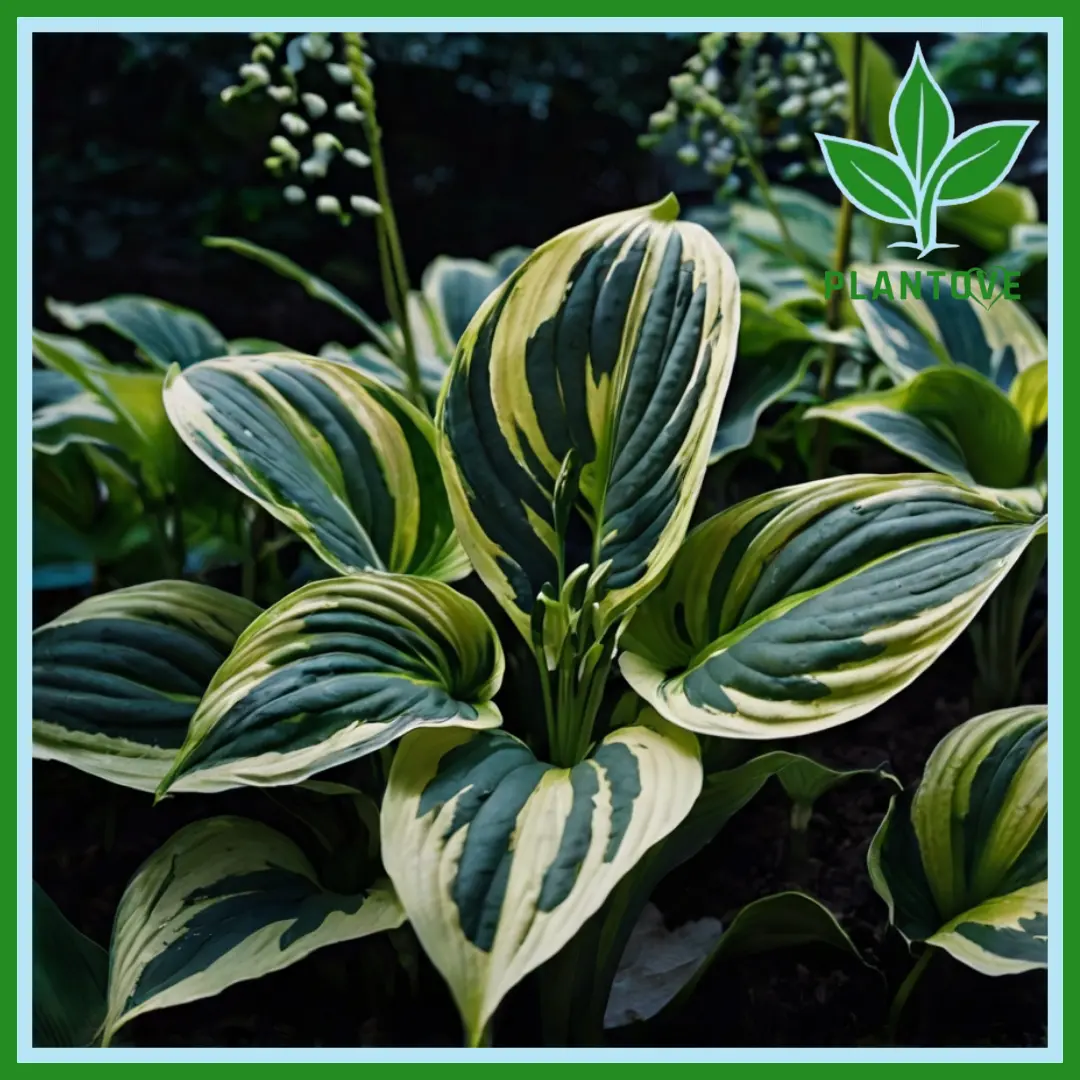The hosta plant is one of the most beloved and versatile perennial plants, well known for its striking, lush foliage. Gardeners love this plant because it thrives in shade, adds texture and color to landscapes, and requires minimal maintenance. Ideal for shady gardens, the hosta comes in a wide array of varieties, boasting various leaf shapes, textures, and colors. In this guide, we’ll delve deep into everything you need to know about the hosta plant, from basic care to propagation and creative landscaping ideas.
What is the Hosta Plant?
The hosta plant, also referred to as plantain lily, originates from East Asia, specifically Japan, Korea, and China. It belongs to the Asparagaceae family and is known for its broad, lush leaves, which can be either solid green, blue, or variegated with white, yellow, or cream. While hostas are predominantly grown for their decorative foliage, they also produce beautiful spikes of bell-shaped or funnel-shaped flowers, typically in summer, with lavender or white hues.
Though it’s a shade-loving plant, the versatility of hosta makes it a must-have for all garden types. Its adaptability to various garden settings and climates, combined with hundreds of available varieties, makes the hosta one of the most popular perennials in landscaping today.
Best Conditions for Growing Hosta Plants
1. Light Requirements
Hostas are quintessential shade plants, but their light needs depend on the variety. Some hosta types perform better in deeper shade, while others tolerate some sunlight, particularly morning sun. Understanding your variety’s light tolerance is key to maintaining vibrant foliage.
- Partial shade: Most hosta plants thrive in partial shade, which is ideal for avoiding leaf scorch from excessive sunlight. Morning sun combined with afternoon shade provides the right balance.
- Full shade: In dense shade, hostas may grow a bit slower, but their foliage will still look lush and vibrant.
- Sun-tolerant varieties: Some hostas, particularly those with golden or lighter-colored leaves, are more tolerant of sun exposure but should still be protected from the harsh midday sun.
2. Soil Requirements
The hosta plant loves rich, well-draining soil with a slightly acidic to neutral pH range of 6.0 to 7.0. While it can tolerate different soil types, amending the soil with organic material ensures it remains moist and fertile, supporting healthy root growth.
- Moist, well-draining soil: Hostas prefer consistently moist soil but cannot handle waterlogged conditions, which can lead to root rot.
- Soil amendments: Adding compost, leaf mold, or well-rotted manure to the soil enriches it and improves drainage.
3. Watering Needs
Hostas have moderate water needs and perform best with consistent moisture, especially during their growing season in spring and summer. They are relatively drought-tolerant once established, but for the lushest growth, ensure regular watering.
- Water regularly: Water deeply once a week, ensuring the soil is moist but not saturated. Increase watering during dry or hot spells.
- Mulch: A 2-3 inch layer of mulch around the base of your hosta helps retain moisture, regulate soil temperature, and suppress weeds.
4. Fertilizing Hostas
Fertilizing your hosta plants is optional but can help improve their growth and vigor. Apply a balanced, slow-release fertilizer in spring to provide essential nutrients throughout the growing season.
- Spring feeding: Feed your hostas in early spring when new shoots begin to emerge. A balanced fertilizer with equal parts nitrogen, phosphorus, and potassium is ideal.
- Organic options: Organic fertilizers such as compost or manure also work well, providing a slow-release source of nutrients.
5. Seasonal Care
Hostas require different care throughout the seasons to ensure year-round beauty.
- Spring: Remove dead leaves from the previous year to allow new growth to thrive. Apply fertilizer and mulch around the plant to retain moisture and suppress weeds.
- Summer: Water regularly and inspect the plant for pests, such as slugs or snails, which are common during the warmer months.
- Fall: Cut back the foliage once it dies back naturally after the first frost. Dividing your hosta plants in the fall can also help rejuvenate their growth for the following season.
- Winter: Mulch the area to protect the roots from freezing temperatures.
Varieties of Hosta Plants
The hosta plant is available in a vast range of varieties, offering something for every type of garden. Here are some of the most popular types of hostas, each with unique characteristics.
1- Hosta ‘Sum and Substance’
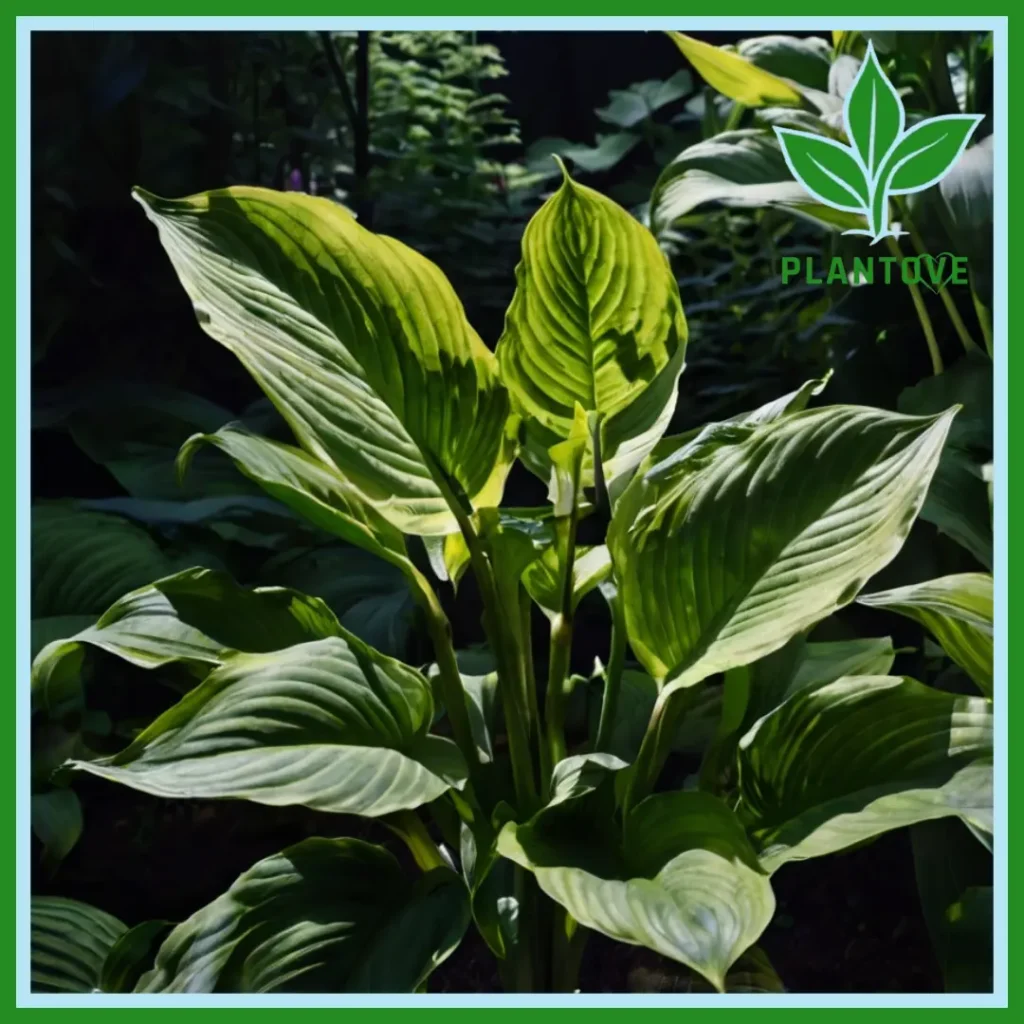
Known for its enormous, chartreuse leaves, ‘Sum and Substance’ can grow up to 3 feet tall and spread up to 6 feet wide. Its glossy leaves and bold appearance make it a great focal point for large spaces.
2- Hosta ‘Patriot’
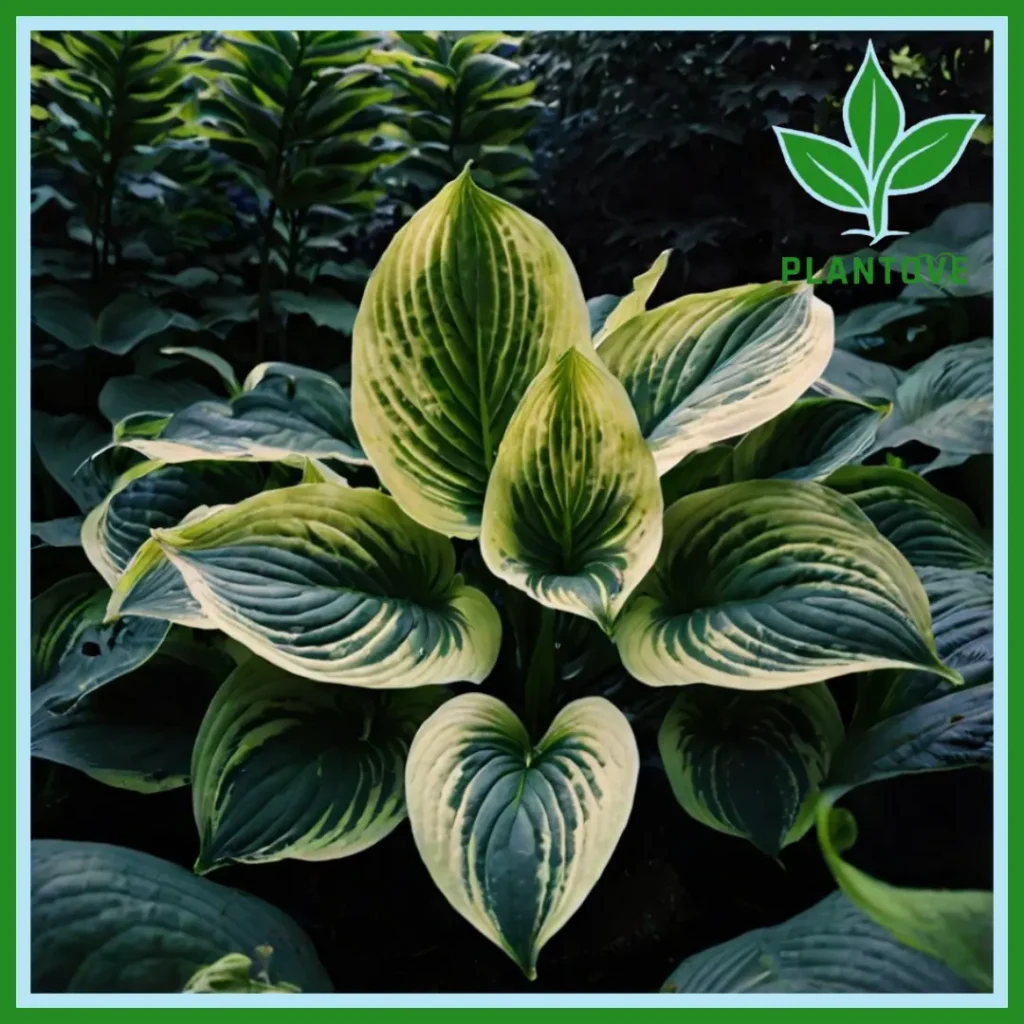
Featuring dark green leaves with striking white edges, ‘Patriot’ is one of the most popular variegated hostas. It reaches about 2 feet in height, making it a great choice for borders and garden beds.
3- Hosta ‘Blue Angel’
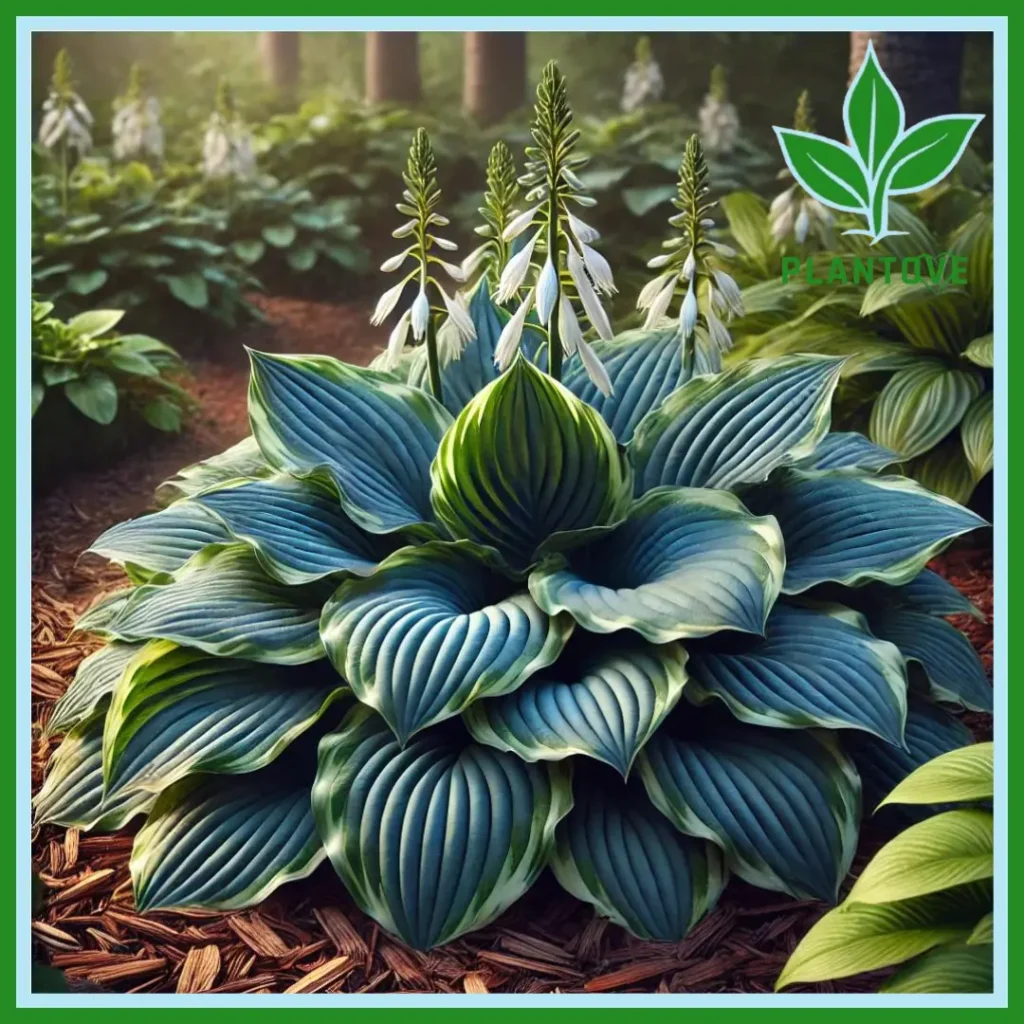
Known for its enormous, powdery blue leaves, ‘Blue Angel’ is a showstopper in the garden. It can grow to be 4 feet wide and 3 feet tall, making it an ideal centerpiece for a shady corner.
4- Hosta ‘Golden Tiara’
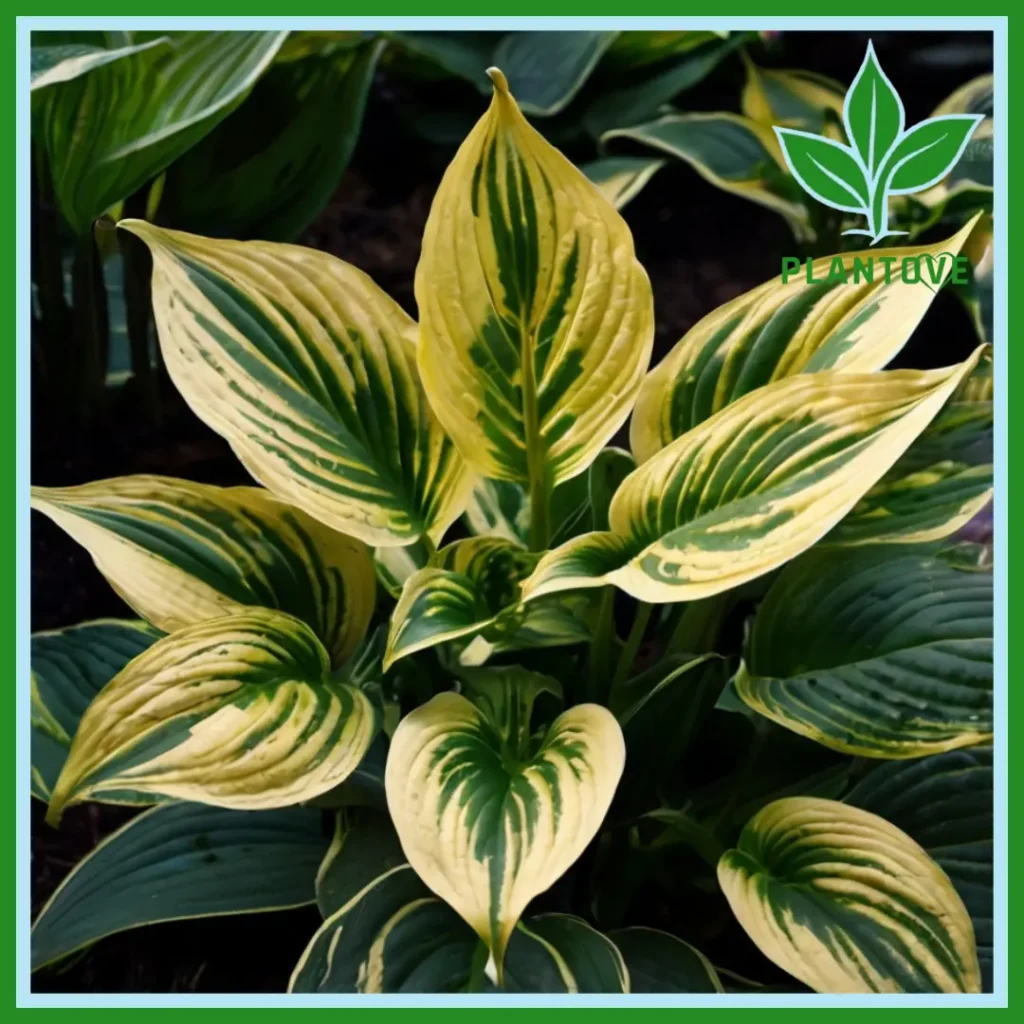
A smaller hosta variety, ‘Golden Tiara’ features heart-shaped green leaves with golden-yellow margins. Its compact size (12-18 inches tall) makes it perfect for edging or container planting.
5- Hosta ‘Frances Williams’
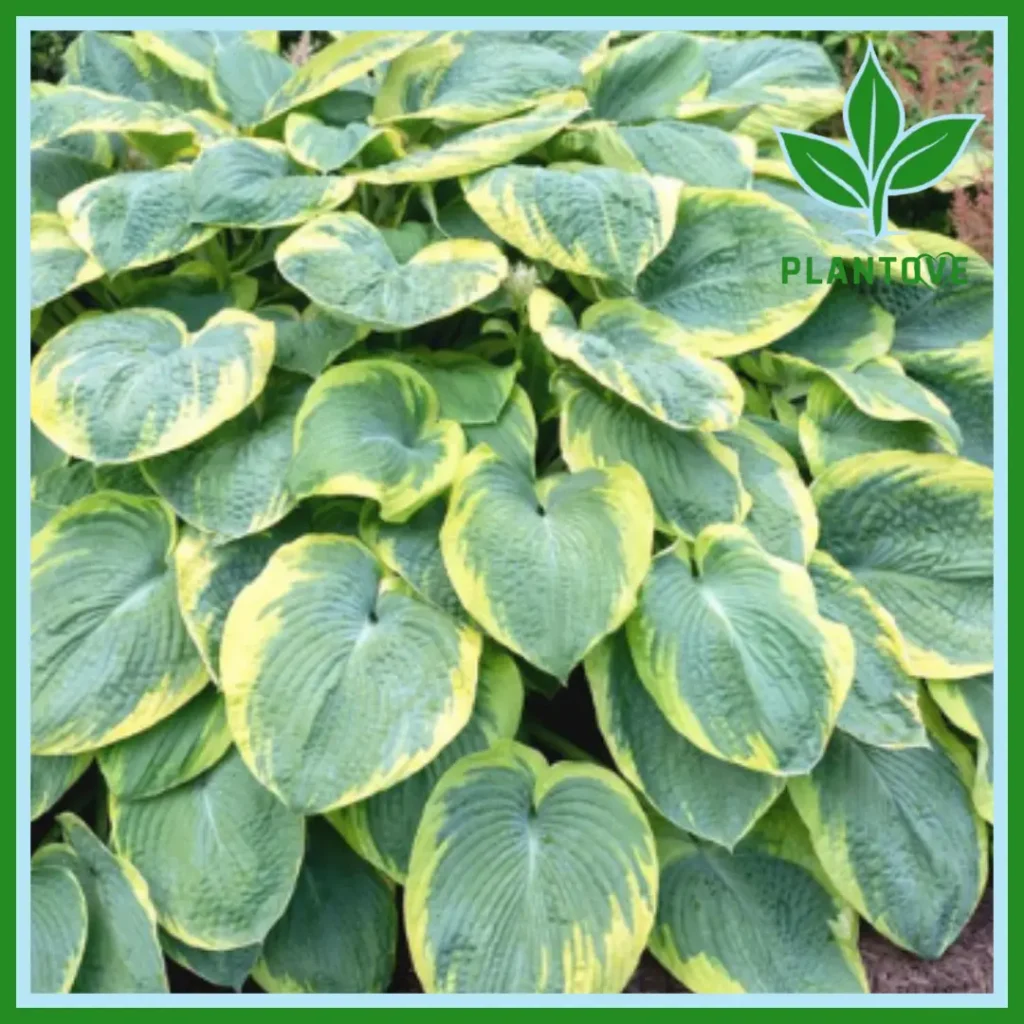
A classic variety with large, blue-green leaves edged in golden-yellow, ‘Frances Williams’ is a stunning hosta for larger spaces. Its leaves are textured and slightly puckered, adding visual interest.
6- Hosta ‘June’
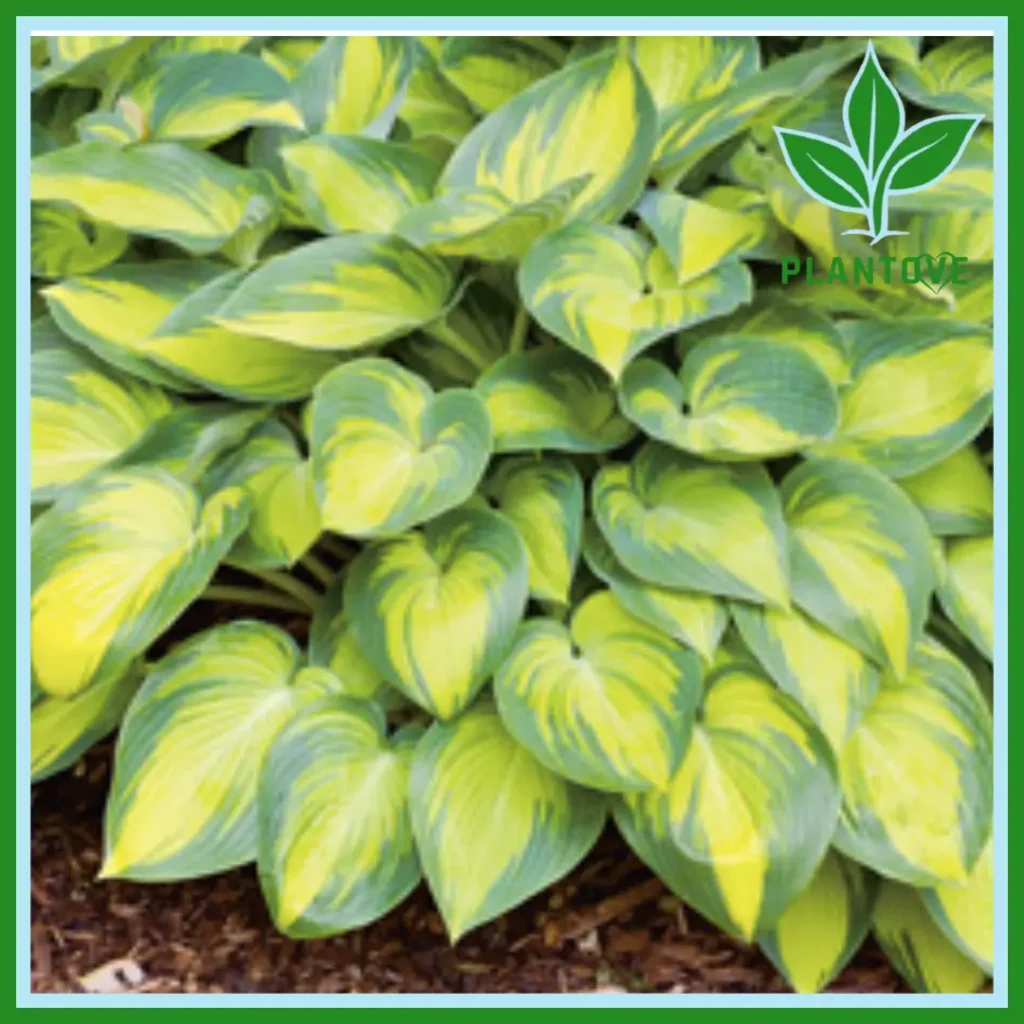
‘June’ is known for its unique foliage, which features blue-green margins and bright gold centers. This variety is smaller (12-18 inches tall), making it ideal for smaller gardens or containers.
How to Propagate Hosta Plants
Propagation of hosta plants is relatively simple and is most commonly done by dividing mature plants. Here’s how to propagate your hostas:
1. Division
Hostas grow in clumps that expand over time, making them perfect candidates for division. Dividing hostas every 3-5 years helps maintain their health and vigor while also providing you with new plants for free.
- When to divide: The best time to divide hostas is in early spring, just as new growth begins, or in fall after the growing season has ended.
- How to divide: Dig up the entire plant and use a sharp knife or spade to divide the root ball into smaller sections, each containing several shoots and roots. Replant the divisions immediately in well-prepared soil.
2. Seed Propagation
Though less common, you can propagate hostas by seed. Keep in mind that hostas grown from seed may not come true to the parent plant, especially variegated varieties.
- Collect seeds: Hostas produce seed pods after flowering. Once the pods turn brown, collect the seeds and dry them for a few days.
- Sow the seeds: Plant the seeds in a seed-starting mix, keeping them moist and warm until they germinate. Seedlings can be transplanted outdoors after they’ve developed several leaves.
Landscaping with Hosta Plants
Hostas are versatile plants that can be used in a variety of landscaping applications, from borders and ground cover to container gardening. Their lush foliage and shade tolerance make them a popular choice for creating depth and texture in garden designs.
1. Hostas as Ground Cover
Because of their dense foliage and spreading habit, hostas make excellent ground cover plants for shady areas. They can be planted in mass to fill in bare spots or under trees where other plants struggle to thrive. Varieties like Hosta ‘Golden Tiara’ and Hosta ‘Francee’ are particularly well-suited for ground cover.
2. Hostas in Containers
Hostas can also thrive in containers, making them a great option for patios, decks, or small gardens. When planting hostas in containers, choose a variety that stays compact, such as Hosta ‘Blue Mouse Ears’ or Hosta ‘Mini Skirt’. Make sure to use a well-draining potting mix and water regularly, as container-grown hostas dry out more quickly than those planted in the ground.
3. Hostas in Borders
Hostas make fantastic border plants, especially when paired with other shade-loving perennials like ferns, astilbes, or bleeding hearts. The variety of leaf colors and textures available allows you to create dynamic borders that add interest and structure to your garden.
4. Hostas as Focal Points
Large hostas, such as Hosta ‘Sum and Substance’ or Hosta ‘Empress Wu’, can serve as stunning focal points in a shady garden bed. Their bold foliage creates a dramatic effect, especially when planted alongside smaller perennials or annuals that contrast in size and shape.
Common Problems and Pests Affecting Hostas
Despite their hardiness, hostas can fall victim to a few common pests and diseases. Understanding these problems and knowing how to prevent them will help you keep your hosta plants healthy.
1. Slugs and Snails
These pests are the most notorious enemies of hostas, especially during the wet, warm months. Slugs and snails chew holes in the leaves, leaving behind unsightly damage.
- Prevention: Use organic slug and snail baits, or create barriers around the plants using crushed eggshells, diatomaceous earth, or copper tape.
- Handpicking: In heavily infested areas, handpicking slugs and snails at night when they’re most active can help reduce their population.
2. Deer and Rabbits
Hostas are a favorite snack for deer and rabbits, particularly in areas where wildlife is abundant. These animals can quickly strip a hosta of its leaves.
- Prevention: Use deer and rabbit repellents, or create physical barriers around your hosta plants. Fencing or netting can help keep these animals away from your garden.
3. Fungal Diseases
While hostas are generally disease-resistant, they can sometimes fall prey to fungal diseases, especially in areas with poor air circulation or waterlogged soil.
- Prevention: Water hostas at the base to avoid wetting the foliage, and ensure they’re planted in well-draining soil. Remove any infected leaves immediately to prevent the spread of disease.
Conclusion
The hosta plant is a gardener’s best friend when it comes to adding lush, vibrant greenery to shaded areas. Whether you’re planting them as ground cover, in containers, or as a focal point, hostas bring texture, color, and beauty to the landscape with minimal maintenance. By following the proper care guidelines and selecting the right varieties for your space, you can enjoy the beauty of hostas for years to come.

